
INSTRUCTIONS FOR USE RITE

Thank you
Thank you for choosing our product as your means to better hearing. To support your
eorts, we have put great care and attention into making sure that your new hearing
instrument is of the highest quality and is easy to use and maintain.
We recommend that you read this manual carefully to achieve the full benet of your
new hearing instrument.
To meet your needs, various functions may be congured to your hearing instrument.
The actual conguration of your instrument can be marked (checked o) by your
Hearing Care Professional in relevant sections of this manual. Also see the last page for
a complete overview of all functions congured to your hearing instrument(s).
The hearing instrument amplication is uniquely adjusted and optimized to your
personal hearing capabilities during the tting performed by your Hearing Care
Professional.
If you have any questions on the use or maintenance of the hearing instrument, please
contact your Hearing Care Professional.
Indications for Use
The hearing instrument is intended to amplify and transmit sound to the ear and
thereby compensate for mild to moderate–to–severe-to-profound hearing impairment.

Instrument view RITE with speaker type “60” 7a
Instrument view RITE with speaker type “85” 7b
Instrument view RITE with speaker type ”100” 7c
Instrument view RITE with mold 7d
Warnings 9
Activating the hearing instrument for the rst time 20
Replacing the battery 21
Turning your instrument ON and OFF 23
Left/Right ear marking 24
Putting on your instrument 25
Push-button 26
Programs (optional) 28
Volume control (optional) 30
Mute (optional) 31
Tamper-resistant battery door (optional) 32
Continues on next page
IMPORTANT NOTICE
Please familiarize yourself with the entire contents of this booklet before using your
hearing instru ment. It contains instructions and important informa tion about the
use and handling of your hearing instru ment and batteries.
CAUTION
The RITE Power is a powerful hearing instrument. If you are tted with RITE Power,
you should never allow others to wear your hearing instrument as incorrect usage
could cause permanent damage to their hearing.
Contents

7a
Instrument view RITE with speaker type “60”
Telecoil (optional) 33
Autophone (optional) 34
DAI direct audio input (optional accessory) 36
FM (optional accessory) 38
Caring for your hearing instrument 40
Cleaning the instrument 42
Maintenance with mold 44
Maintenance with dome 46
Avoiding heat and chemicals 49
Water resistance 50
Eight easy steps to better hearing 52
Common problems and their solutions 58
Wireless accessories 60
International warranty 62
Warranty certicate 63
Cell phone 64
Technical information 66
Settings overview for your hearing instrument 70
Speaker
Microphone openings
Push-button
Battery door
Sound outlet
Wax protection
Your ear piece
Micro Mold
LiteTip (mold)
Domes:
Typ e S iz e
Open 6 mm
Power 8 mm
Bass, single vent 10 mm
Bass, double vent 12 mm
Battery size: 312

7b
IMPORTANT NOTICE
Open the battery compartment fully to allow air to circulate whenever you are not
using your hearing instrument, particularly overnight.
Instrument view RITE with speaker type “85”
Speaker
Microphone openings
Push-button
Battery doorSound outlet
Wax protection
Your ear piece
Micro Mold
LiteTip (mold)
Domes:
Typ e S iz e
Open 6 mm
Power 8 mm
Bass, single vent 10 mm
Bass, double vent 12 mm
Battery size: 312

7c
Instrument view RITE with speaker type ”100”
Power
IMPORTANT NOTICE
Open the battery compartment fully to allow air to circulate whenever you are not
using your hearing instrument, particularly overnight.
Microphone openings
Push-button
Your ear piece
Domes:
Typ e S iz e
Power 6 mm
Bass, single vent 8 mm
Bass, double vent 10 mm
12 mm
Speaker
Battery door
Sound outlet
Wax protection
Battery size: 312

7d
IMPORTANT NOTICE
Open the battery compartment fully to allow air to circulate whenever you are not
using your hearing instrument, particularly overnight.
Sound outlet
+ wax protection
system
Ventilation openings Battery door
Push-button
Microphone openings
Custom
mold
Instrument view RITE with mold (Power)
Battery size: 312

9
IMPORTANT NOTICE
Open the battery compartment fully to allow air to circulate whenever you are not
using your hearing instrument, particularly overnight.
You should familiarize yourself fully with the following general warnings and the entire
contents of this booklet before using your hearing instrument.
Usage of hearing instruments
• Hearing instruments should be used only as directed and adjusted by your Hearing
Care Professional. Misuse can result in sudden and permanent hearing loss.
• Never allow others to wear your hearing instrument as incorrect usage could cause
permanent damage to their hearing.
Choking hazards
• Hearing instruments, their parts, and batteries are not toys and should be kept out
of reach of children and anyone who might swallow these items or otherwise cause
injury to themselves.
• Never replace the battery or adjust the controls of the hearing instrument in front of
infants, small children or people with learning diculties.
• Discard batteries carefully in a place where infants, small children or people with
learning diculties cannot reach them.
Warnings

10 11
• Batteries have occasionally been mistaken for pills. Therefore check your medicine
carefully before swallowing any pills.
• Never put your hearing instrument or batteries in your mouth for any reason, as they
are slippery and could be swallowed by accident.
• Most hearing instruments can be supplied with a tamper-resistant battery
compartment upon request. This is strongly recommended for infants, small children,
and people with learning diculties.
If a battery or hearing instrument is swallowed, see a doctor immediately and call the
National Poison Center, collect (202) 625-3333.
Battery use
• Always use batteries recommended by your Hearing Care Professional. Batteries of
low quality may leak and cause bodily harm.
• Never attempt to recharge your batteries. They may explode and cause serious
injury.
• Never dispose of batteries by burning them. There is a risk that they will explode and
cause serious injury.
Dysfunction in hearing instruments
• Hearing instruments may stop functioning, for instance if the batteries have expired
or if the speaker is blocked by moisture or ear wax. You should be aware of this
possibility, in particular when you are in trac or otherwise dependent on warning
sounds.
Active implants
Caution must be shown with active implants. As general advice, follow the guidelines
as recommended by manufacturers of implantable debrillators and pacemakers
regarding use with cell phones:
• If you wear an active implant, then keep the hearing instrument more than 15 cm
away from the implant, e.g., do not carry them in a breast pocket.
• If you have an active brain implant, please contact the manufacturer of your
implantable device for information about the risk of disturbance.
Warnings Warnings

12 13
• The included case for instrument storage may have a built-in magnet. If so, and you
have an implantable device, such as pacemakers or debrillators, the instrument case
should not be carried in a chest pocket or near to the chest.
If you are in doubt of details of your instrument case, contact your Hearing Care
Professional.
• The MultiTool has a built-in magnet. If you have an implantable device, such as
pacemakers or debrillators, the MultiTool should not be carried in a breast pocket or
near the chest.
Explosives
• The power source in your hearing instrument has insucient energy to cause re in
normal conditions of use. The hearing instrument has not been tested for compliance
with international standards concerning explosive environments. It is recommended
not to use your hearing instrument in areas where there is a danger of explosions.
X-ray, CT, MR, PET scanning and electrotherapy
• Remove your hearing instrument, for example, during X-ray, CT / MR / PET scanning,
electrotherapy or surgery as your hearing instrument may be damaged when
exposed to strong elds.
Power instrument
• Special care should be exercised in selecting, tting and using a hearing instrument
where maximum sound pressure capability exceeds 132 dB SPL (IEC 711), as there
may be risk of impairing the remaining hearing of the hearing instrument user.
Possible side eects
• Hearing instruments, molds or domes may cause an accelerated accumulation of ear
wax.
• The otherwise non-allergenic materials used in hearing instruments may in rare
cases cause a skin irritation or any other unusual condition.
Please seek consultation with a physician if these conditions occur.
Warnings Warnings

14 15
Interference
• Your hearing instrument has been thoroughly tested for interference, according to
the most stringent international standards. However, interference with your hearing
instrument and other devices may occur, for example, for some cell phones, citizens
band devices and shop alarm systems. If this occurs, increase the distance between
the hearing instrument and the device.
Wax protection system
• Always visually inspect your hearing instrument to ensure that there is no gap
between the wax protection ange and the tip of the mold.
If you are in any doubt of the use or replacement of your wax protection system, contact
your Hearing Care Professional.
Warnings
Warnings
Warning to hearing instrument dispensers
A hearing instrument dispenser should advise a prospective hearing instrument user
to consult immediately with a licensed physician (preferably an ear specialist) before
dispensing a hearing instrument if the hearing instrument dispenser determines
through inquiry, actual observation, or review of any other available information
concerning the prospective user, that the prospective user has any of the following
conditions:
(i) Visible congenital or traumatic deformity of the ear.
(ii) History of active drainage from the ear within the previous 90 days.
(iii) History of sudden or rapidly progressive hearing loss within the previous 90 days.
(iv) Acute or chronic dizziness.
(v) Unilateral hearing loss of sudden or recent onset within the previous 90 days.
(vi) Audiometric air-bone gap equal to or greater than 15 decibels at 500 Hertz (Hz),
1,000 Hz, and 2,000 Hz.
(vii) Visible evidence of signicant cerumen accumulation or a foreign body in the
ear canal.
(viii) Pain or discomfort in the ear.

16 17
Warnings Warnings
Special care should be exercised in selecting and tting a hearing instrument whose
maximum sound pressure capability exceeds 132 dB SPL as there may be risk of
impairing the remaining hearing of the hearing instrument user.
Important notice for prospective hearing instrument users
• Good health practice requires that a person with a hearing loss have a medical
evaluation by a licensed physician (preferably a physician who specializes in diseases
of the ear) before purchasing a hearing instrument. Licensed physicians who
specialize in diseases of the ear are often referred to as Otolaryngologists, Otologists
or Otorhinolaryngologists. The purpose of medical evaluation is to ensure that all
medically treatable conditions that may aect hearing are identied and treated
before the hearing instrument is purchased. Following the medical evaluation, the
physician will give you a written statement that states that your hearing loss has
been medically evaluated and that you may be considered a candidate for a hearing
instrument. The physician will refer you to an audiologist or a hearing instrument
dispenser, as appropriate, for a hearing instrument evaluation.
• The audiologist or hearing instrument dispenser will conduct a hearing instrument
evaluation to assess your ability to hear with and without a hearing instrument. The
hearing instrument evaluation will enable the audiologist or dispenser to select and
t a hearing instrument to your individual needs. If you have reservations about
your ability to adapt to amplication, you should inquire about the availability of a
trial, rental or purchase-option program. Many hearing instrument dispensers now
oer programs that permit you to wear a hearing instrument for a period of time
for a nominal fee, afterwhich you may decide if you want to purchase the hearing
instrument. Federal law limits the sale of hearing instruments to those individuals
who have obtained a medical evaluation from a licensed physician.
• Federal law permits a fully informed adult to sign a waiver statement declining the
medical evaluation for religious or personal beliefs that preclude consultation with a
physician. The exercise of such a waiver is not in your best health interest and its use
is strongly discouraged. A hearing instrument will not restore normal hearing and will
not prevent or improve a hearing impairment resulting from organic conditions.
A hearing instrument is only part of hearing rehabilitation and may need to be
supplemented by auditory training and lip reading.

18 19
Children with hearing loss
In addition to seeing a physician for medical evaluation, a child with a hearing loss
should be directed to an audiologist for evaluation and rehabilitation, since hearing loss
may cause problems in language development and educational and social growth of a
child. An audiologist is qualied by training and experience to assist in the evaluation
and rehabilitation of a child with a hearing loss. If the user is an infant, small child,
or person of mental incapacity, it is recommended that the hearing instrument be
modied with a tamper-resistant battery compartment.
Warnings

20 21
Activating the hearing instrument for the rst time
A hearing instrument is a miniature electronic device that runs on special batteries.
To activate the hearing instrument, you must insert a fresh battery in the battery
compartment.
The hearing instrument will start up when the battery door is closed. It will take a few
seconds until sound is produced. A jingle is played while the start up process is running.
You may put on the hearing instrument immediately upon closing the battery door.
If the hearing instrument is held in the hand while activated, it may produce a whistling
sound. This will stop when properly tted on the ear.
Replacing the battery
Your hearing instrument battery size is 312.
A worn out battery should be removed immediately and
disposed of according to local regulations.
You will hear 2 beeps when it is time to replace the battery.
This pre-warning will be repeated in moderate intervals
until the battery runs out. The battery may run out shortly
after a pre-warning or within the next couple of hours
depending on battery capabilities and individual hearing
losses.
If the battery runs out, the instrument turns o.
When that happens, 4 beeps are played to indicate that the
instrument is no longer operating.
Replace the battery.

22 23
MultiTool
To replace the battery, follow these instructions:
• Open the battery door completely by pushing the raised edge at the bottom of the
instrument. Remove the old battery. The magnet at the end of the MultiTool may be
useful in helping you with the handling of the batteries.
• Remove the sticky label from the + side of the new battery.
• The new battery may be inserted by using the magnetic end of the MultiTool.
Ensure that the positive (+) marking faces the positive (+) sign printed on the battery
door. Close the battery door.
Any moisture on the battery surface should be wiped
o before use.
When you replace the battery, it will take a few
seconds before the battery works.
Turning your instrument ON and OFF
Turn ON your hearing instrument by closing the battery door completely with the
battery in place. When the battery door is closed the instrument will start up by playing
a jingle. This indicates that the battery is working and the instrument is operating.
Turn OFF your hearing instrument by opening the battery door slightly until a click is
felt.
To preserve the battery, make sure your hearing instrument is switched o when you
are not wearing it.
ON
Click
OFF
Click
IMPORTANT NOTICE
Open the battery door fully to
allow air to circulate whenever
you are not using your hearing
instrument, especially at night
or for longer periods of time.

1
2
3
4
24 25
Left/Right ear marking
Hearing instruments are tted to the uniqueness of each ear, which means if you
have two instruments then your left hearing instrument is programmed dierently
from your right. That is why it is important to distinguish between the left hearing
instrument and the right.
In order to easily identify whether it is a left ear or right ear instrument, color markings
may be applied inside the battery door.
A blue dot marks the LEFT instrument.
A red dot marks the RIGHT instrument.
Putting on your instrument
Place the speaker, with the ear piece attached, into your ear
rst (1) and then place the instrument behind your ear (2).
If the instrument has a mold as its ear piece, ensure it is
positioned in the ear canal tightly but comfortably.
Make sure that the ear piece is placed so that the tube
follows the contour of the skin.
If the instrument has an ear grip, place it in the ear as
indicated in drawings 3 and 4 so it follows the contour of the
ear.

26 27
Push-button
Your hearing instrument has an ergonomically designed push-button for volume
adjustment and switching between dierent programs.
The push-button can be pressed and activated on either the upper part (UP) or the
lower part (DOWN).
DOWN
UP
The push-button on your hearing instrument can be programmed to one of three
functionalities.
Left Right
Only program shift:
Press briey to change program.
Only volume control:
Press briey to adjust the volume.
Both volume control and program shift:
Press briey to adjust the volume and use a long press (about 2
seconds) to shift programs.
Binaural Coordination enabled (see “Using 2 instruments”).
Using 2 instruments
If you have two instruments the push-button on one instrument will change the status
on both hearing instruments. This means when you adjust the program or volume for
one instrument that it automatically adjusts the other.
This is programmed by your Hearing Care Professional.

28 29
Your hearing instrument can have up to 4 dierent programs.
The number and type of programs available in your hearing instrument is programmed
by your Hearing Care Professional.
When switching between the dierent programs, your hearing instrument will beep.
The number of beeps will indicate which program you are using.
One beep, when you switch to program 1
Two beeps, when you switch to program 2
Three beeps, when you switch to program 3
Four beeps, when you switch to program 4
Programs (optional)
Press the upper part to go forwards in the program cycle, e.g., from P1-P2.
Press the lower part to go backwards in the program cycle, e.g., from P3-P2.
An overview and description of the hearing programs available in your hearing
instrument is placed on the last page of this manual.
DOWN
UP

30 31
A volume control may be activated. The volume control allows you to adjust the volume
in specic listening situations to the level you feel comfortable with.
To increase volume, briey press the upper part of the push-button.
To decrease volume, briey press the lower part of the push-button.
You hear a click when you increase or decrease the volume.
When the hearing instrument is turned on, it starts up at a
preferred volume level. When adjusting the volume control
to the preferred level, this is indicated by a beep.
Volume control (optional)
Increase
Decrease
Use the mute function if you need to silence the instrument while you have the
instrument on.
Push the button for a minimum of 3 seconds to mute the instrument.
Note: pushing either end of the button for 3 seconds will mute the instrument.
IMPORTANT NOTICE
Do not use the mute function as a switch o as
the hearing instrument still draws current from
the battery in this mode.
Mute (optional)
OR
Push 3 sec.

32 33
A special battery door may be installed with your hearing instrument which
protects against unintended operation of the battery door and battery.
This is strongly recommended for infants, small children and people with
learning diculties.
Instructions
To lock the battery door:
Make sure the door is completely closed. Use a small screwdriver to turn the
tamper-resistant screw to the locked position.
To unlock the battery door:
Use a small screwdriver to turn the tamper-resistant screw to the unlocked
position. The battery door can be opened as usual.
Important: Do not force the battery door beyond its fully opened position.
Insert the battery correctly. Excessive force can damage the battery
door and thereby reduce its locking ability.
Tamper-resistant battery door (optional)
The telecoil is a receiver for audio signals transmitted from an inductive loop
installation. The telecoil is meant for telephone* conversations and for loop systems in
places such as theaters, churches or lecture rooms.
The telecoil is activated by the push-button, as switching between programs. When
activated, you will hear a certain number of beeps corresponding to the telecoil
program.
See the “Hearing programs description” on the last page for where the
telecoil program is placed.
This logo incorporates the universal symbol for hearing assistance; the
“T” signies an available telecoil compatible system.
* Requires a telephone with built in tele loop. Tele loop is a common standard for
assisted listening and transmits the audio to the telecoil in the hearing instrument.
Telecoil (optional)
Page is loading ...
Page is loading ...
Page is loading ...
Page is loading ...
Page is loading ...
Page is loading ...
Page is loading ...
Page is loading ...
Page is loading ...
Page is loading ...
Page is loading ...
Page is loading ...
Page is loading ...
Page is loading ...
Page is loading ...
Page is loading ...
Page is loading ...
Page is loading ...
Page is loading ...
Page is loading ...
Page is loading ...
-
 1
1
-
 2
2
-
 3
3
-
 4
4
-
 5
5
-
 6
6
-
 7
7
-
 8
8
-
 9
9
-
 10
10
-
 11
11
-
 12
12
-
 13
13
-
 14
14
-
 15
15
-
 16
16
-
 17
17
-
 18
18
-
 19
19
-
 20
20
-
 21
21
-
 22
22
-
 23
23
-
 24
24
-
 25
25
-
 26
26
-
 27
27
-
 28
28
-
 29
29
-
 30
30
-
 31
31
-
 32
32
-
 33
33
-
 34
34
-
 35
35
-
 36
36
-
 37
37
-
 38
38
-
 39
39
-
 40
40
-
 41
41
Oticon Nera Instructions For Use Manual
- Type
- Instructions For Use Manual
Ask a question and I''ll find the answer in the document
Finding information in a document is now easier with AI
Related papers
-
Oticon G-shot P534 User manual
-
Oticon Alta CIC Instructions For Use Manual
-
Oticon ITC Instructions For Use Manual
-
Oticon Go Instructions For Use Manual
-
Oticon Microphone Operating instructions
-
Oticon More, Play PX and Zircon miniBTE T/miniBTE R Operating instructions
-
Oticon Companion App User guide
-
Oticon ConnectLine Streamer Pro Operating instructions
-
Oticon CROS PX Operating instructions
-
Oticon Parents User guide
Other documents
-
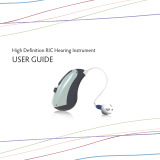 Sebotec Ric Owner's manual
Sebotec Ric Owner's manual
-
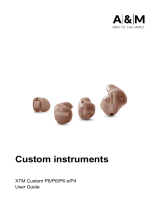 A&M XTM CUSTOM P4 User guide
A&M XTM CUSTOM P4 User guide
-
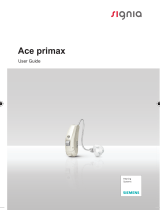 Signia Ace Primax User manual
Signia Ace Primax User manual
-
Bernafon Pico RITE Operating instructions
-
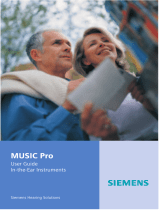 Battery-Biz MUSIC Pro Pro IT User manual
Battery-Biz MUSIC Pro Pro IT User manual
-
Bernafon Nano RITE Operating instructions
-
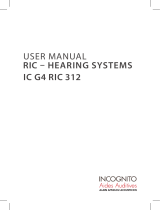 INCOGNITO IC 6 G4 RIC 312 User manual
INCOGNITO IC 6 G4 RIC 312 User manual
-
ReSound Interton Cosmo, Crisp, Share & Step RIE User guide
-
Bernafon Power BTE Operating instructions
-
Bernafon Compact Power Plus BTE Operating instructions













































